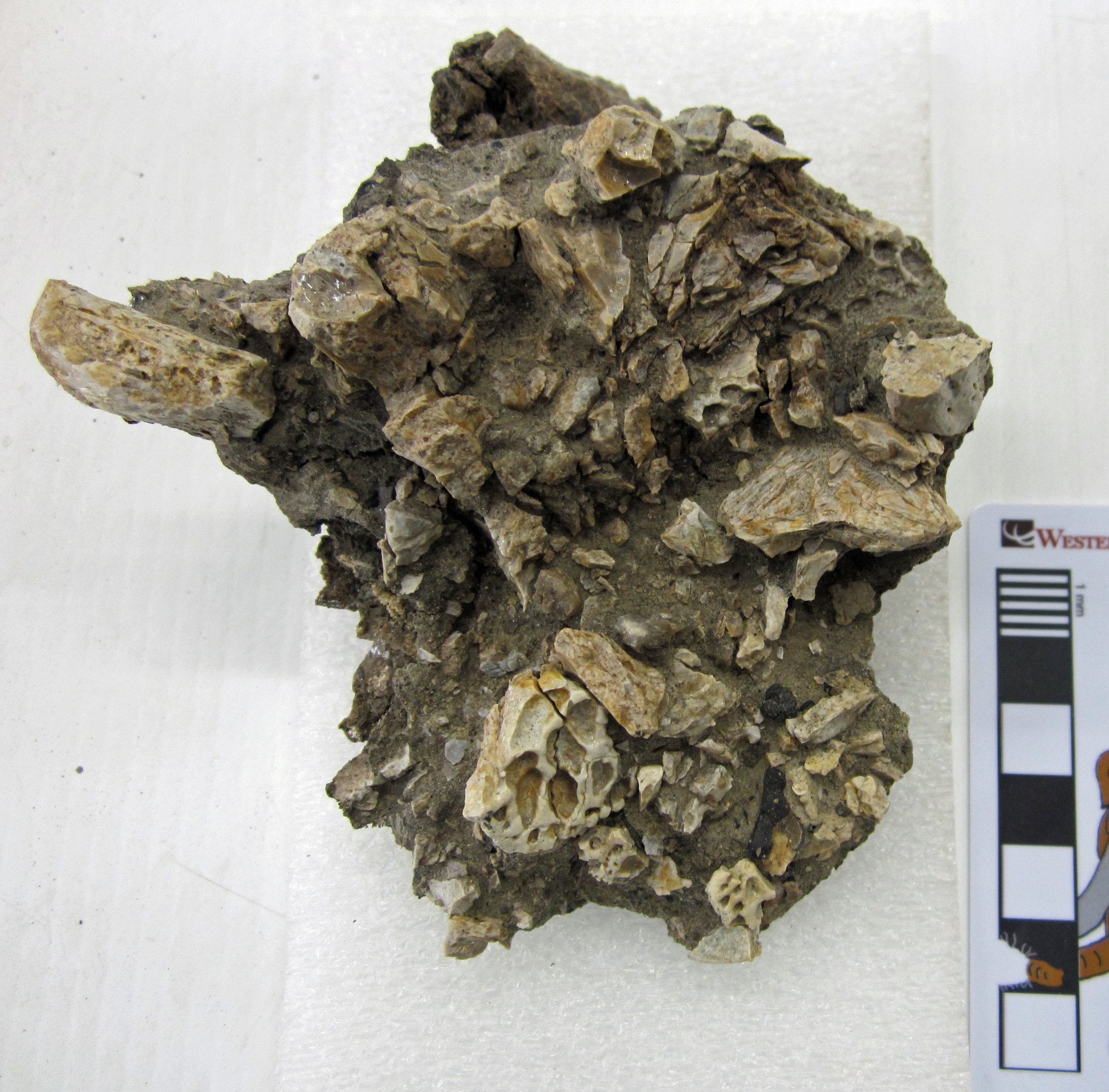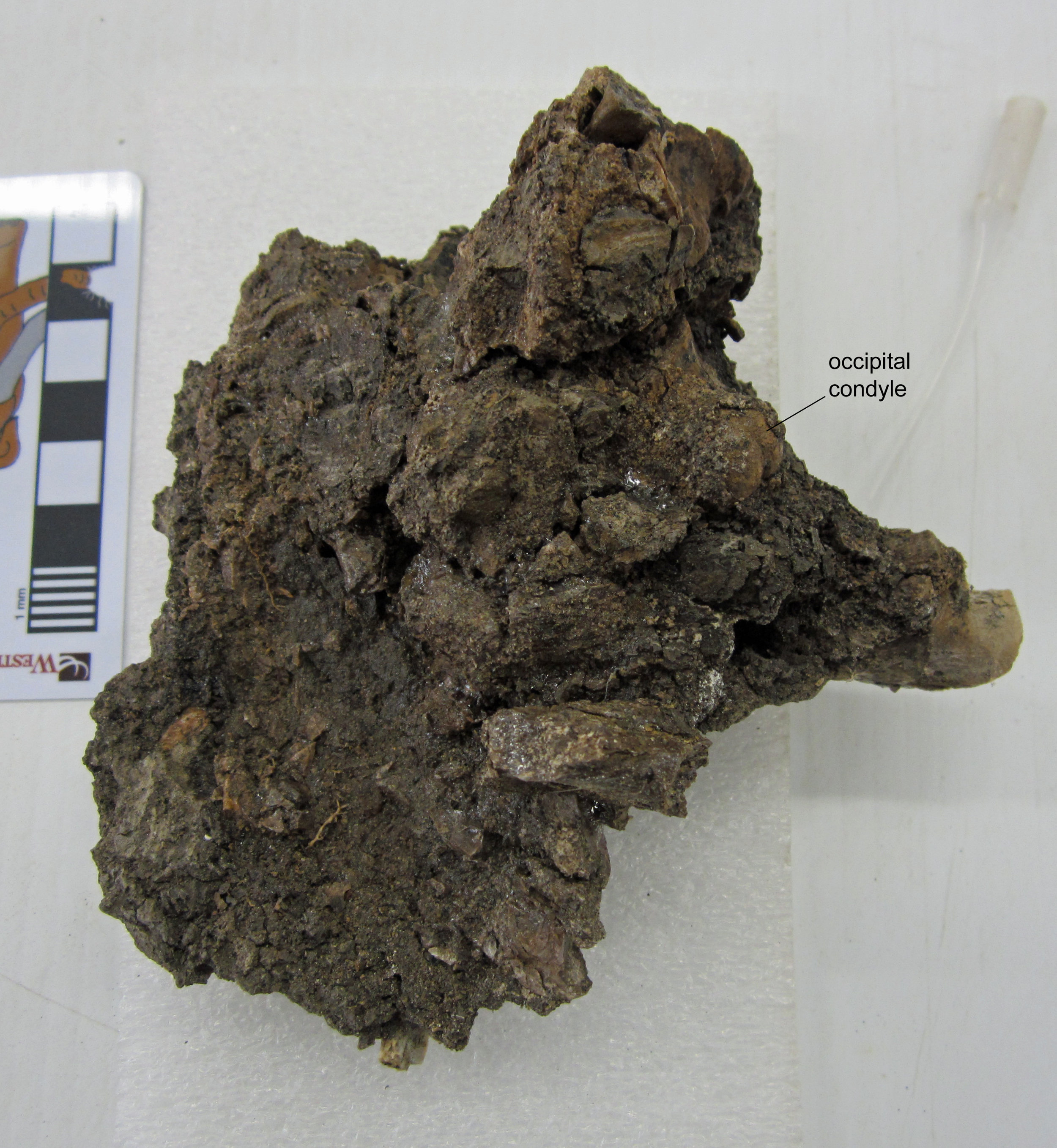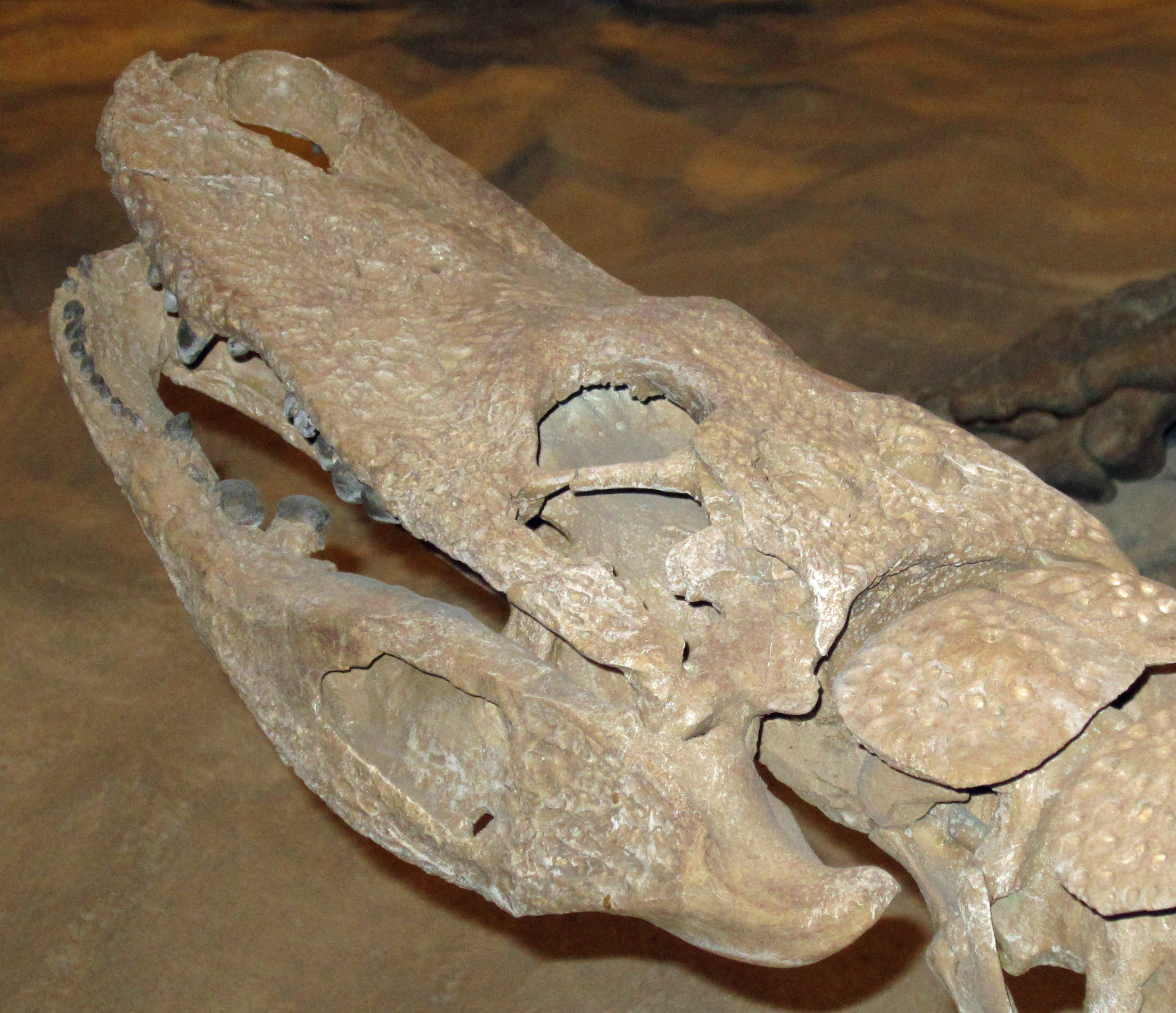 Giant reptiles abound in our field area in New Mexico. Big dinosaurs like Invictarx, Dynamoterror, and the hadrosaur we're working on now; hefty crocodiles; and even sizable turtles are the most commonly found animals in the 79-million-year-old rocks of the Menefee Formation. Fossils of small creatures are comparatively rare, and skull material for any animal is pretty thin on the ground as well.During the expedition in May with our partners at Zuni Dinosaur Institute for Geosciences, three volunteers from the Southwest Paleontological Society collected a small mass of bone with a distinctive heavily pitted texture that resembles modern crocodilian skulls. In the field, we tentatively identified it as part of a crocodilian skull. We opened up the little plaster jacket here at Western Science Center this week, and confirmed that it is indeed the partial skull of a small crocodilian. The dorsal surface of the skull is badly fragmented, but clearly shows that pitted texture. The ventral side is also highly weathered, but we can see the base of the braincase and the occipital condyle, the ball at the back of the skull that articulates with the first neck vertebra.
Giant reptiles abound in our field area in New Mexico. Big dinosaurs like Invictarx, Dynamoterror, and the hadrosaur we're working on now; hefty crocodiles; and even sizable turtles are the most commonly found animals in the 79-million-year-old rocks of the Menefee Formation. Fossils of small creatures are comparatively rare, and skull material for any animal is pretty thin on the ground as well.During the expedition in May with our partners at Zuni Dinosaur Institute for Geosciences, three volunteers from the Southwest Paleontological Society collected a small mass of bone with a distinctive heavily pitted texture that resembles modern crocodilian skulls. In the field, we tentatively identified it as part of a crocodilian skull. We opened up the little plaster jacket here at Western Science Center this week, and confirmed that it is indeed the partial skull of a small crocodilian. The dorsal surface of the skull is badly fragmented, but clearly shows that pitted texture. The ventral side is also highly weathered, but we can see the base of the braincase and the occipital condyle, the ball at the back of the skull that articulates with the first neck vertebra. We're just beginning to prep this fossil. Right now, based on the size and skull texture, it might belong to an ancient alligator relative called Brachychampsa. Brachychampsa is known from many Upper Cretaceous formations in western North America, and was first identified in the Menefee Formation of New Mexico by paleontologist Tom Williamson (New Mexico Museum of Natural History and Science) in 1996. It's a small animal, just about six feet long, with a broad, blunt snout, as you can see on this mounted skeleton that I photographed at the Natural History Museum of Utah in Salt Lake City. We'll have much more to say about our little skull and the other Menefee crocodilians in the not too distant future.
We're just beginning to prep this fossil. Right now, based on the size and skull texture, it might belong to an ancient alligator relative called Brachychampsa. Brachychampsa is known from many Upper Cretaceous formations in western North America, and was first identified in the Menefee Formation of New Mexico by paleontologist Tom Williamson (New Mexico Museum of Natural History and Science) in 1996. It's a small animal, just about six feet long, with a broad, blunt snout, as you can see on this mounted skeleton that I photographed at the Natural History Museum of Utah in Salt Lake City. We'll have much more to say about our little skull and the other Menefee crocodilians in the not too distant future. Post by Curator Dr. Andrew McDonald
Post by Curator Dr. Andrew McDonald
